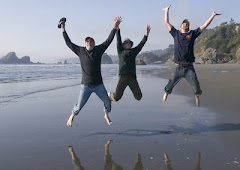On the one hand, you have Bill Bryson, the out of shape
middle-aged journalist (and his even more out of shape friend Stephen Katz)
failing, over many months, to hike the entire 2,100 miles of the Appalachian
Trail but giving us a marvelously funny book full of historical, naturalist,
and intellectual ruminations in A Walk in
the Woods. On the other hand, you have ultrarunner Scott Jurek’s Instagram postings
of an ultra fit man running up and down the trail in his attempt to speed through the
entire route in 42 days.
In the middle, you have the 2015 hikers who started out in
Georgia in April and are in fine form at the beginning of June in Virginia.
That’s where I saw almost 50 of them on the Appalachian Trail near Roanoke, day
hiking my measly 9 miles. I wonder what form they’ll be in when they reach
Maine in September.
They’re called “thru hikers,” but they also give themselves
trail names. The first one we met (I was visiting my friends Elaine and
Richard, former Taoseños, now Roanoke residents) was Pilgrim. A German, he
looked like he’d just stepped out of an outdoor catalog: polypropylene matching
shorts and shirt; Osprey mid-weight backpack; state of the art accordion pad
for sitting and sleeping; telescoping hiking poles; mid-weight boots. He told
us his basic pack weighted just 20 pounds and he carried 10 pounds of food. A
slim, trim, hiking machine.
 |
| A thru hiker outfitted in the ubiquitous gear |
A young woman—the vast majority of them are millennials—soon
came up and bumped him with a “What up?” They weren’t exactly friends—both
started out alone and only occasionally hiked together—but as thru hikers they
were bonded. They all are, I guess. It helps that they have to share the shelters
and campsites spread out over the course of the trail, but affinities are found
or formed over the endless days of 10 to 20 miles hikes.
When we reached the overlook at lunch, there were about 10
of them resting on the rocks eating their high energy fare. Soon the sweet
smell of pot wafted over us as they broke out the dope. I think I’d be tempted
to bring along some stronger stimulants as well, but they seemed very happy with
weed as they chatted away during their brief respite.
We met many more coming up the trail as we headed down after
lunch. While the gear was identical—Osprey packs with rain covers, hiking
poles, etc.—the bodies and apparel weren’t. There was the man with the full Paul
Bunyan beard with his tank top/short shorts partner. There was the shirtless
man with the wraparound headdress. There was the woman with the umbrella and
her backpack-carrying dog (it started to rain but no one wore a raincoat as it
was too hot). When we stopped to chat with Waldo, the young man who informed us
that he usually hiked 19 or so miles a day but stopped when his body told him
to, I asked him why everyone carried the same brand backpack, figuring there
was an online promotion of said Osprey. But no, he said, everyone shops at REI
where brand Osprey rules.
To someone from the west—me—it was all a bit claustrophobic.
The ubiquitous deciduous forests (full of blooming rhododendron) were lush and
thick, but without the diversity of terrain and ancient feel of the mixed conifer
western forests I’m used to, and with the crowd of thru hikers (albeit they
were congregated in Virginia because of the season), it felt a little
redundant. Here’s Bryson’s description of the same forest I walked in Virginia:
“So the forest through which Katz and I now passed was
nothing like the forest that was known even to people of my father’s
generation, but at least it was a forest. It was splendid in any case to be
enveloped once more in our familiar surroundings. It was in every detectable
respect the same forest we had left in North Carolina—same violently slanted
trees, same narrow brown path, same expansive silence, broken only by our tiny
grunts and labored breaths as we struggled up hills that proved to be as steep,
if not quite as lofty, as those we had left behind.”
The word that is often used to describe the Appalachian
Trail environment is pastoral. There’s nothing wrong with pastoral: in other
essays I’ve quoted Bryson in his eloquent defense of the mix of wild/domestic
terrain that characterizes the trail, as one leaves and enters civilization
along the route. I don’t buy into the lament that to have wilderness one must
exclude people, the cry of the deep ecologist.
 |
| Pilgrim, communing with nature |
I guess it’s just what you’re used to. The operative words
in Bryson’s quote are “at least it was a forest.” During our conversation with
Pilgrim, he mentioned he’d hiked the Camino de Santiago from the French border
through the Pyrenees Mountains of Spain (everyone is Pilgrim there). We
questioned him about details: one only has to carry a daypack, with hostels,
hotels, and cafes at every night stop along the way. He
called it a “cultural hike.” So take your pick: a pastoral hike along the
Appalachian Trail (but with plenty of hard work); a wild hike along the Continental
Divide Trail; or a cultural hike along the Camino de Santiago. I’ll take them
all—as long as I’m not trying to do any of them in 42 days.

No comments:
Post a Comment